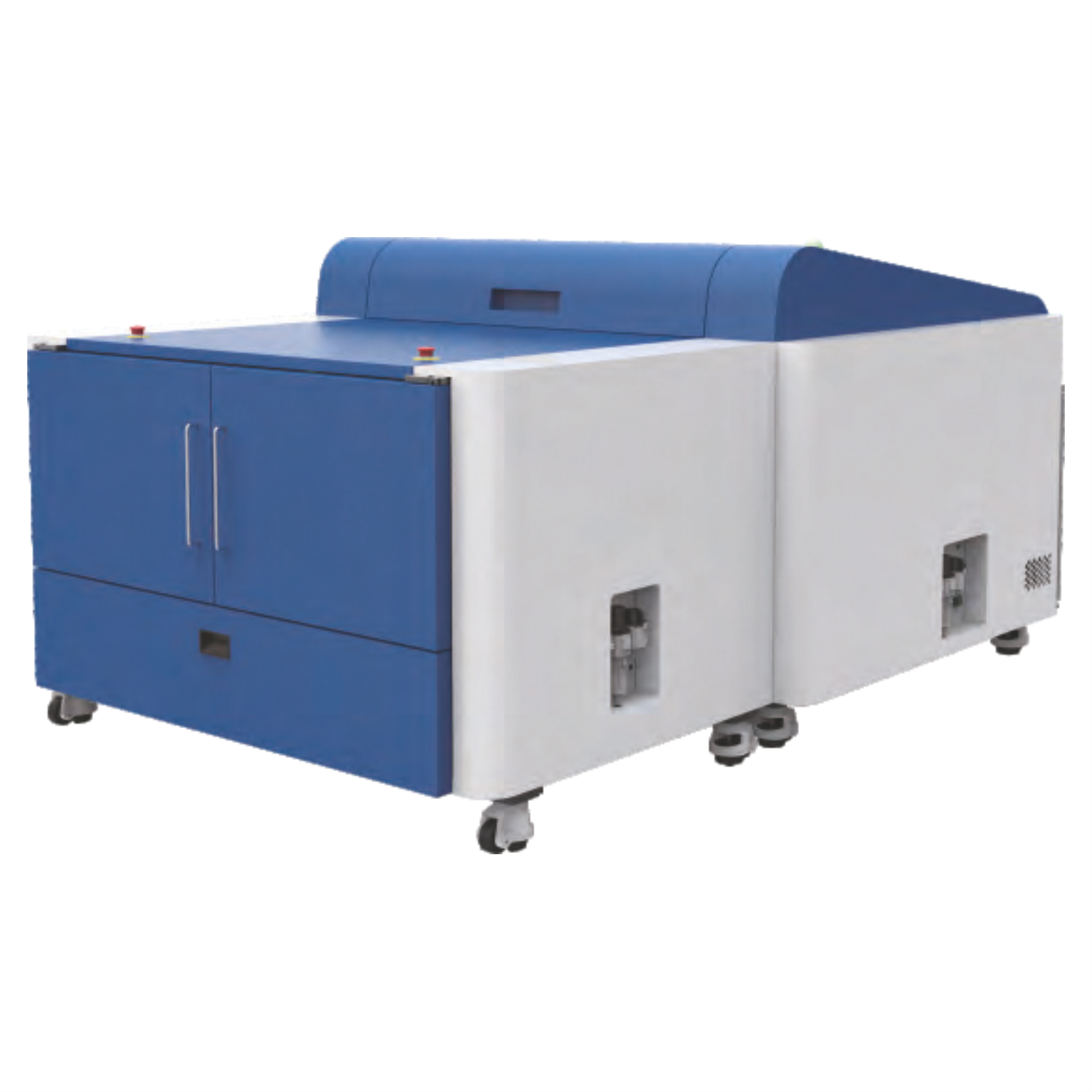
Model: T256-8/F5
| Models | T256/8-F3 | T256/8-F4 | T256/8-F5 | |||
|---|---|---|---|---|---|---|
| Exposing Method | External Drum | |||||
| Imaging System | ||||||
| 830nm Laser | ||||||
| Max. Output Speed | 35 plates/hour | 45 plates/hour | 55 plates/hour | |||
| 1,030mm x 800mm | Plate Sensitivity: 100mJ/cm2 | ||||||
| Plate Size | Max: 1,163mm x 940mm, Min: 400mm x 300mm | |||||
| Exposing Size | Max: 1,163mm x 924mm | |||||
| Plate Thickness | 0.15mm ~ 0.3mm | |||||
| Resolutions |
Standard: dual resolutions 2,400dpi and 1,200dpi, or 2,540dpi and 1,270dpi (Option) Variable high resolution option: maximum up to 10,000dpi at fast scan direction |
|||||
| Repeatability | ± 0.005mm | |||||
| Interface | Optical fiber/GB Ethernet | |||||
| Plate Loading | Manual load(P) Automatic load: Single cassette(SCL), Multiple cassette(MCL-8) | |||||
| Plate Loading Quantity (0.27mm Plate) |
Single cassette unit(SCL): 100 plates Multiple cassette unit(MCL-8); 400 plates (4 × 100 plates/cassette) |
|||||
| Auto slip Paper Collection Bin | Included in Autoloader | |||||
| Bridge to Processor | Included | |||||
| Punching System | Option: Internal punching (Max. four sets of plate holes) | |||||
| Net Weight |
CTP manual load(P): 890 KG's CTP with single cassette (SCL): 985 KG's CTP with multiple cassette (MCL-8): 1,350 KG's |
|||||
| Device Size |
CTP manual load(P): 1,900×2,510×1,356mm. (WXLXH) CTP with single cassette(SCL): 1,900×3,011×1,356mm. (W×L×H) CTP with multiple cassette (MCL-8): 1,900×3,267×1,356mm. (W×L×H) |
|||||
| Power |
CTP manual load(P): Single phase: 220V, Power: 3.8KW (Peak value), 1.5KW (Average) CTP with single cassette(SCL): Single phase: 220V, Power: 4,2KW (Peak value), 2KW (Average) CTP with multiple cassette(MCL-8): Single phase: 220V, Power: 4.6KW(Peak value), 2.5KW (Average) |
|||||
| Environment | Operating temperature range:15-30°C Recommended temperature:21-25°C Humidity: 40%-70% | |||||